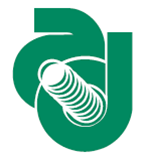Dr
Albert Lehmann
(Universität Erlangen-Nürnberg)
25/05/2012, 15:30
S3 - PID and Photo Detectors
Oral
The PANDA experiment at the new FAIR facility at GSI will perform charmonium spectroscopy and search for gluonic excitations using a high luminosity antiproton beam. The main components of the particle identification system will consist of DIRC (Detection of Internally Reflected Cherenkov Light) detectors residing inside a magnetic field of up to 2 Tesla. The most attractive sensors to detect...
Dr
Jerry Vavra
(SLAC)
25/05/2012, 15:55
S3 - PID and Photo Detectors
Oral
We present a progress status of a new concept of PID detector called FDIRC, intended to be used at the SuperB experiment, which requires $\pi/K$ separation up to a few GeV/c. The BaBar experiment has used very successfully the DIRC PID detector (DIRC = Detector of Internally Reflected Cherenkov light). The original DIRC had one weak point: its huge photon camera, filled with 6,000 liters of...
Dr
Luca Gironi
(MIB)
25/05/2012, 16:20
S3 - PID and Photo Detectors
Oral
Among the detectors used for rare event searches, bolometers are very promising because of their favourable properties. However, up to now, the possibility to identify the interacting particle, and thus to greatly reduce the background, can be fulfilled only with a double read-out (e.g. heat and scintillation light). This double read-out could greatly complicate the assembly of a huge,...
Prof.
Samo Korpar
(University of Maribor)
25/05/2012, 16:45
Sven Herrmann
(SLAC National Accelerator Laboratory)
25/05/2012, 17:25
S3 - PID and Photo Detectors
Oral
With the successful operation of three 2.3 megapixel, 120Hz readout rate, hybrid pixel array detectors at the Linac Coherent Light Source (LCLS), the SLAC detector group is now exploring further applications based on the same detector platform. These megapixel cameras are based on the Cornell-SLAC hybrid Pixel Array Detector (CSPAD).
One of the first spin-off detectors based on the proven...
Dr
Ralf Hendrik Menk
(Sincrotrone Trieste)
25/05/2012, 17:50
S3 - PID and Photo Detectors
Oral
Quantum well (QW) structures are planar objects in which electrons are confined in one dimension. Compound semiconductors can be used to fabricate QWs with several combinations of barrier and well materials, allowing for a tuning of the electron band gap down to 0.8 eV. Preliminary experiments carried out on such an InGaAs / InAlAs QW indicate that these devices are very valuable in multi band...
Prof.
Guy Paic
(Instituto de Ciencias Nucleares, UNAM)
25/05/2012, 18:15
S3 - PID and Photo Detectors
Oral
In the framework of the ALICE VHMPID project we have built a RICH detector prototype consisting of a matrix of six triple CsI coated TGEMs each of them having an active area of 10x10cm$^2$. As a radiator in first tests we used C$_5$F$_{14}$ in order to correctly compare the TGEM efficiency with the CsI-MWPC efficiency which we used as a reference. One triple TGEM has been placed behind the...

